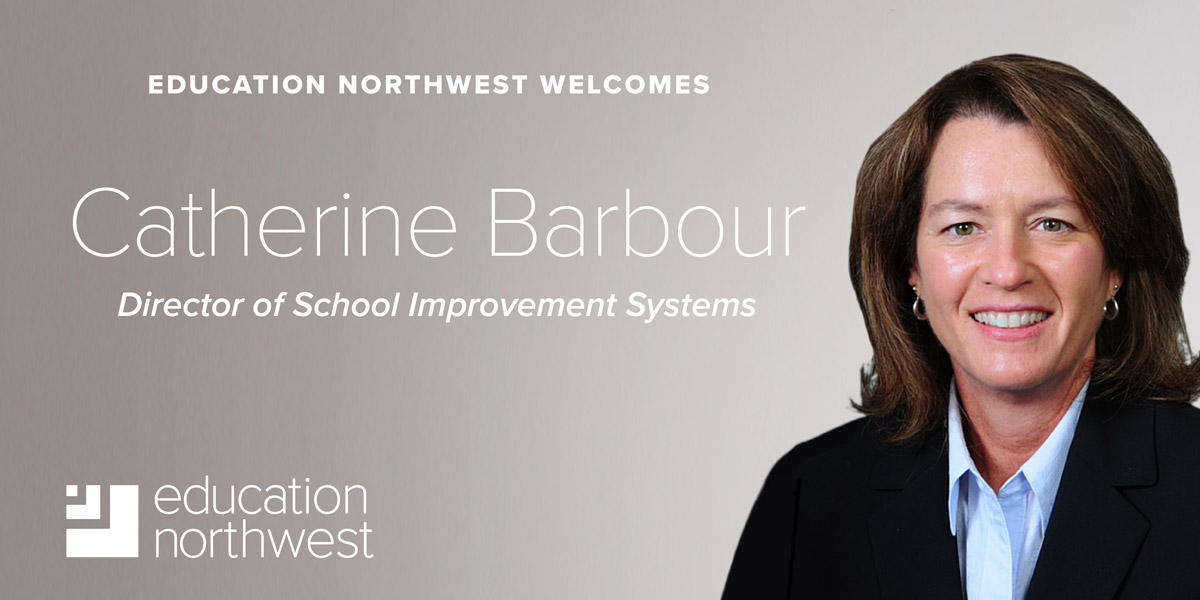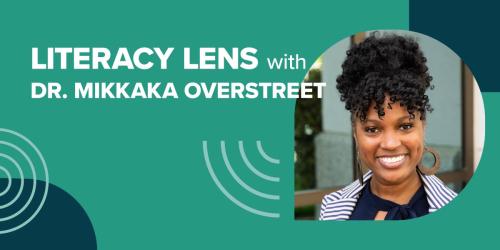Catherine Barbour Joins Education Northwest to Lead Equity-Driven School Improvement

Catherine Barbour, Education Northwest’s new Director of School Improvement Systems, has spent over thirty years helping some of the lowest-performing districts and schools in the nation achieve equity-driven improvement. When she goes into these institutions—defined by the Every Student Succeeds Act of 2015 as those performing in the lowest 5 percent of their district or state—she often finds talented staff and leaders.
“When you listen to their stories,” Barbour says, “it’s like they dropped the compass on the ground and somebody stepped on it. Now they’re just kind of going around trying to do the best they can as individuals.” Often these schools or districts once performed well. “But there’s usually an event or two that marks the time when things stopped,” she says. “They stopped working as a team, they stopped pulling together. It’s super satisfying to work with folks to help them get back on the path. You can watch them just come back to life. And the beneficiaries of that are the students.”
Bravery in the Face of Data
While teachers are an essential part of what happens in a school, Barbour says that research on school improvement shows increasing evidence of the critical role of principals. After all, school leaders determine the learning schedule, choose curricular materials, and connect the school to the community. They also recruit, hire, train, support, observe, and provide feedback to teachers. “When those factors aren’t working at the most optimum level,” she says, “that’s oftentimes when we see schools trail down.”
In her years of experience working with schools across the country, Barbour has noted some common characteristics of effective leaders. They’re results-oriented, she says, and able to clearly state where the school needs to be. They are always observing, scanning, and assessing the environment. “They’re not afraid of the data,” she says, including both qualitative and quantitative measures. “They even embrace data we might characterize as ‘doesn’t look good.’ So they’re courageous in that particular way.”
A Journey of Discovery
Barbour knows how schools work because she started as a teacher herself. Her first school performed at a high level, but she volunteered for a summer program in a school district that worked with underserved students in Hampton, Virginia. “I saw that I could really fulfill a need,” she says. That led her to become the assistant principal, and then principal, of the fourth-lowest performing school in Spotsylvania, Virginia. That school, whose students were 98 percent African American, had a long history of performing poorly. When she worked with teachers to improve it, the effort caught the attention of Mark Warner, then the governor of Virginia.
Barbour entered a program Warner established as a partnership between the schools of business and education at the University of Virginia. School leaders like her, who had demonstrated their ability to effect organizational change in schools, got a year of training and then were deployed to schools with the university’s support. “That set me off on this journey of learning and discovering,” she says.
Don’t Call it a Turnaround
While people who do what Barbour does—coming into schools to advise, coach, and help them get better—are often called “turnaround experts,” she accepts that label only with qualifications. The term “turnaround,” she says, evokes for many school leaders a federal reform model of the past that mandated replacing a poorly performing school’s principal. “I have really changed my language to be more about equity-driven school improvement,” she says, “and that is, I think, more reflective of where we are as a society today.”
Regardless of what you call the change that’s needed, schools that perform at the bottom of a given district operate in systems of huge disparities and inequities. “It’s still our most underserved, disenfranchised students,” she says. “It’s still under-resourced. We still have an east side and a west side, and the east side is where all the white students go and they have all the resources and the best teachers, and the west side is where no one wants to be.”
We are excited and honored to have Catherine join our team at Education Northwest. Her experience in equity-driven school improvement systems will complement and strengthen our efforts to maintain and expand our services supporting students and schools. –Patty Wood, Chief Executive Officer, Education Northwest
For the Students
In her brief time getting to know people at Education Northwest, she says, Barbour has already noted positive signs. “To me, we’re primed to be able to push deeper into the equity work and to be able to really have some sustainable impact in school systems and helping them address issues of equity.” Doing so without exacerbating existing divisions can be challenging. “In some communities, these are really charged issues,” she says. “We want to come in and be the facilitator, the negotiator, the mediator, to help bring people together around these issues. It’s the students who are being impacted, and we can have a better outcome for our students when everyone isn’t up in their corners, arguing their positions.”
Behind all the data, that’s what motivates Barbour. “In every school that isn’t meeting whatever their state’s accountability standards are,” she says, “there are students sitting at a desk. And they deserve the best. I can’t stop until every student is on the other end of a consistently delivered quality education that goes from preschool all the way to 12th grade. So there’s a lot more work to be done.”



